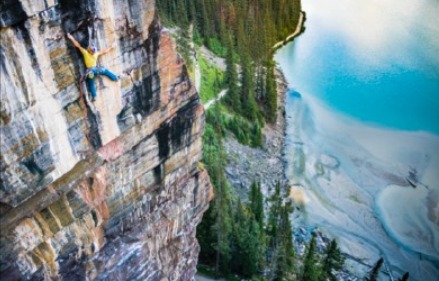The Lion’s Den
Chris Sharma and Alex Megos on Climbing Sleeping Lion
por tenaya
2024-02-06T19:02:08
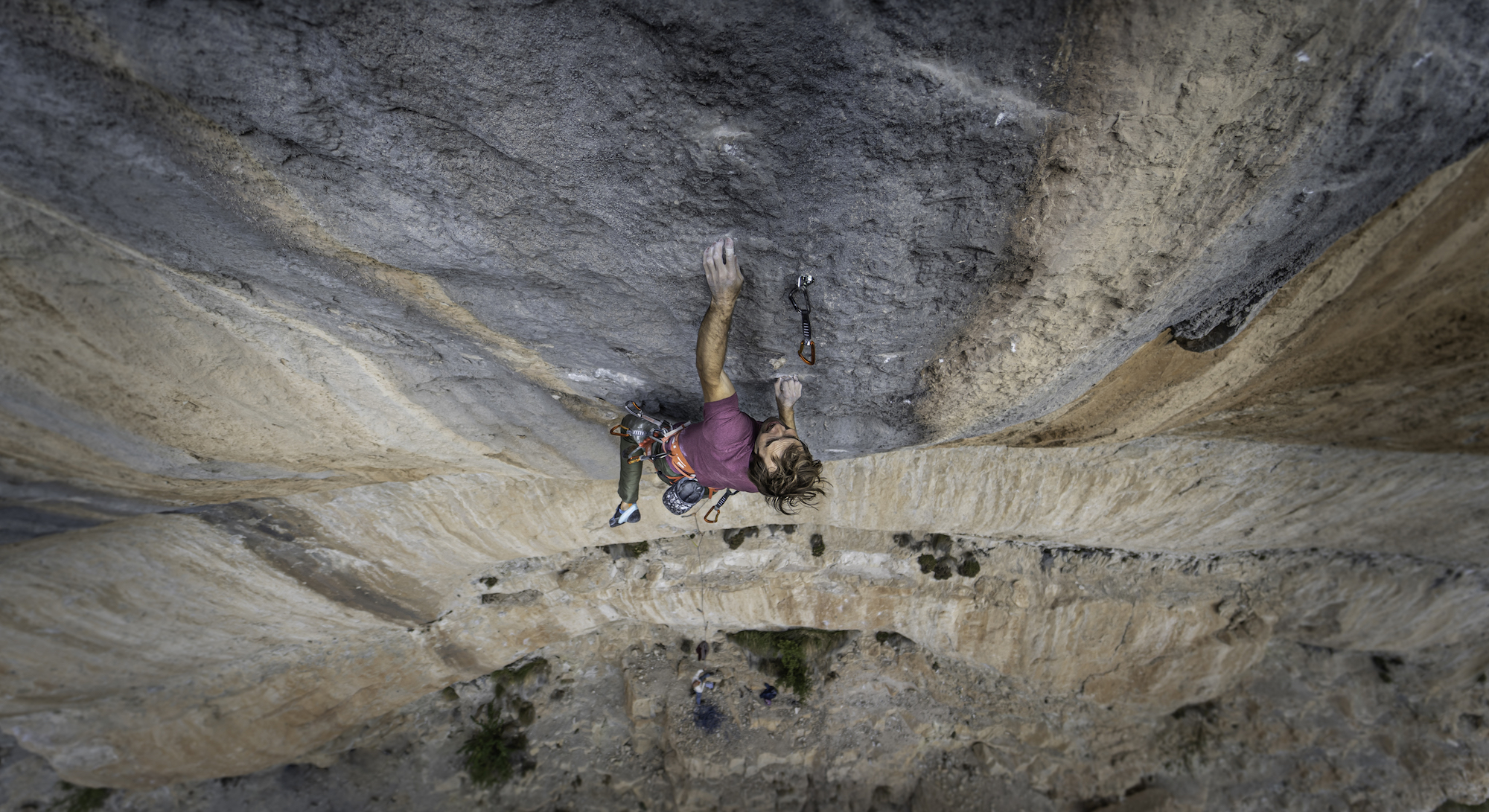
In March of 2023, Chris Sharma made the first ascent of Sleeping Lion at the iconic El Pati sector of Siurana—a route that is bound to be a test-piece for generations to come. While he clipped the chains only last year, his vision for the route dates all the way back to 2006 when he climbed the neighboring classic La Rambla (9a+), and its existence ultimately stems from his drive to find new lines.
“For me, the creative process of seeking something out, envisioning a line, and bringing that to life is a really important part of what inspires me in rock climbing,” he says. If every climb bears the signature of its author, Sleeping Lion—with its crimpy and dynamic moves up a striking blue-and-white wave of rock, all leading to a high redpoint crux—is no exception.
It’s no wonder, then, that Sleeping Lion quickly caught the attention of other top climbers, including Felipe Camargo, Stefano Ghisolfi, and Jorge Diaz-Rullo. But it was Alex Megos who came away with the coveted second ascent, on January 5, after eight days of effort.
This is the story of Sleeping Lion, as told by Chris Sharma and Alex Megos.
Q&A with Chris Sharma:
How did you discover Sleeping Lion and what inspired you to climb it?
Ever since I climbed La Rambla [9a+] in 2006, I’ve looked at that wall. Later, I think it was in 2008, I went back to climb Golpe de Estado [9b] on the right side, which was one of my first 5.15b’s, but I always remember looking at that blue wall in the middle.
The thing about the wall, at the bottom, it’s this very white rock that’s very blank looking. It’s really hard to see a way up there. It’s the type of rock that you need to actually go in close to inspect.
I always thought one day I’d have to go up there and put some bolts in, and just get up close and see if I can find a pathway up through that section. It’s the same itch that I get when I’m hiking around looking for boulders or whatever it is, if I don’t go up there and check that out, I’m going to regret it so bad if someone comes 15 years later and finds a line there.
“That’s really what I’ve always been about, finding new lines. But you’ve got to leave no stone unturned because that mega line could be right around the corner.”
You’ve got to go that extra mile as a route developer. That’s really what I’ve always been about, finding new lines. But you’ve got to leave no stone unturned because that mega line could be right around the corner. And because you didn’t go look, you missed it, and it was sitting there your whole life. And that kind of haunts me.
So I went up there. Right in the scoop area of the wall, where it has that wave feature, I went up a neighboring route about 40 feet to the right and put a line of bolts across that so I could lower down in multiple areas to scour the wall to see if I could find an entrance.
I put in that time and I was able to find an entrance into it. That gave me the motivation to then go from the top and bolt the rest of the route. It was pretty cool how it all came together.
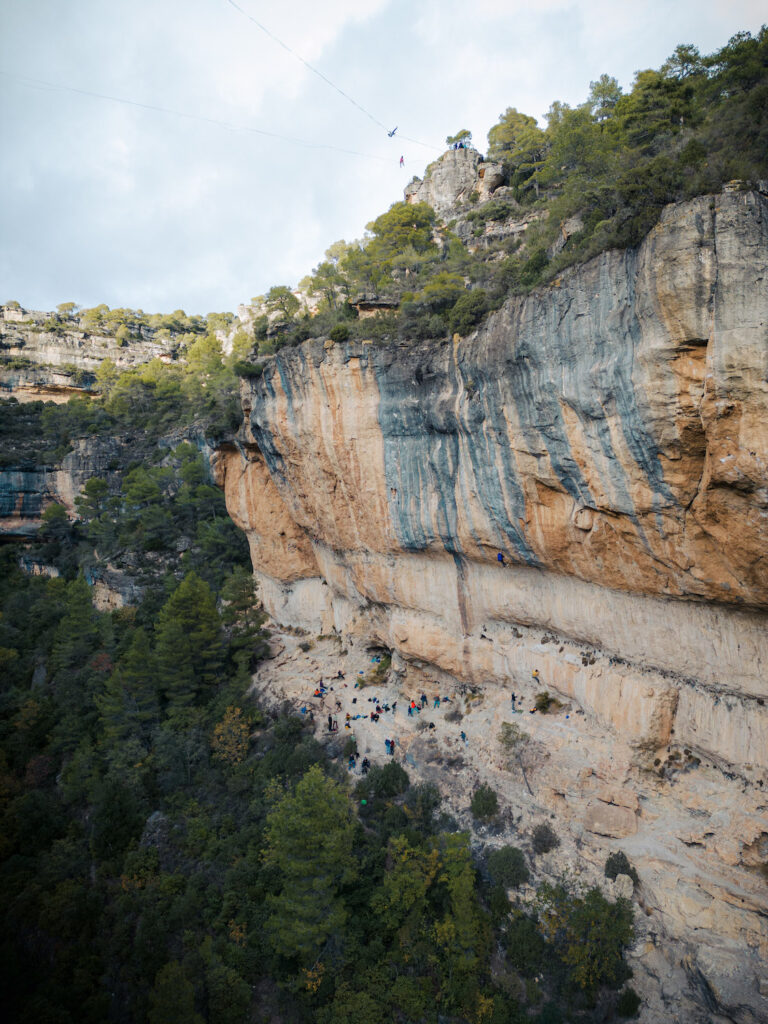
In the Sleeping Lion film, you mentioned that between family and the gyms, you’re more of an “extreme weekend warrior” now. What does a typical day or week of climbing look like for you?
Having kids and trying to balance all of that is not easy. During the weekends, I’m all with my family. And during the weekdays, it’s kind of my time to make my own schedule with regards to my personal climbing and other work-related obligations with our climbing gyms.
Doing a new route on that wall came at a perfect time for me. I had moved from Barcelona to Gavà, so we were only about an hour and a half from Siurana. It worked out perfectly for me to have a project that was relatively close to my house and at the perfect difficulty for me, too. It was something that I felt like I definitely could do, so it was a very motivating set of circumstances.
I would usually go [to Siurana] two times a week, sometimes three. And then I would usually supplement that with another day or so in the gym.
As everything progressed and I started getting closer on the route, every time I would go out there I would climb a lot on the route. It wasn’t like I would just go boulder on it, bolt-to-bolt. I fell for quite a long time up at the top of the route, and so every week I would climb like four or five 5.15s, you know, basically doing reps on that thing. So it ended up being amazing training at the same time.
On one hand, it was super crucial for me having our gym to get through this challenging phase of parenthood. But aside from that, my approach has been the same as it’s always been, which is just to go climbing, and I didn’t do any specific training. No dissing any of that stuff. Everyone has their own approach. But for me it always has been and still is that just going climbing is the best way to get strong.
Watch Chris Sharma’s Attempts on Sleeping Lion:
Would you say the climb is more of an endurance route?
It’s power endurance. It has four boulder problems, and none of them on their own are super hard, maybe V11, maybe there’s a V12 or something, but there’s these poor rests in between, so being able to recover and keep your pump at bay through all of those sequences is key.
It was interesting, for me. I was 41 when I did it and it had been a while since I’d really spent that much time on a super hard route. I fell like 15 times at the top on this gaston move. It’s a really weird sequence because the move itself isn’t that hard, but I fell there so many times, and I was just so pumped. It made me question if it was actually hard.
That’s one of the most challenging things when you’re doing a new route that’s never been climbed, especially when you’re trying it in a bubble on your own. You lose perspective of what you’re doing. You’re like, I don’t even know if this is hard anymore, I’ve tried it so long.
So it was really interesting to see Alex come and climb. Obviously, his whole process was much quicker, but I think that eight days was still a pretty significant amount of time for him to try a single route, and he fell four times on that move, so it was kind of reassuring.
Did you get to spend any time with Alex when he was working the route, besides fixing the broken hold?
Yeah, I helped him there. That was the only day I was out there with him, so unfortunately I didn’t get to spend any more time out there with him. But, yeah, Alex is a good guy and I was happy to see that he sent it.
Ultimately, I think it’s very validating when another top climber like Alex comes and dedicates the time to repeat one of your routes. A lot of routes disappear into obscurity and no one ever does them—maybe because they’re hard or maybe because they’re not very attractive, who knows. But when the top climbers of today travel to do that route, it’s cool. It means something. And so for me it’s very rewarding to see that and to be a part of that exchange.
Climbing is such a personal activity but at the same time there is this communal aspect of sharing accomplishments with that community and the feedback you get from them. When other people get psyched, it motivates you, and you feel like you’re contributing in some way.
I’m very stoked to see other people out there enjoying the route. I think it’s a good climb that a lot of people are going to be psyched on.
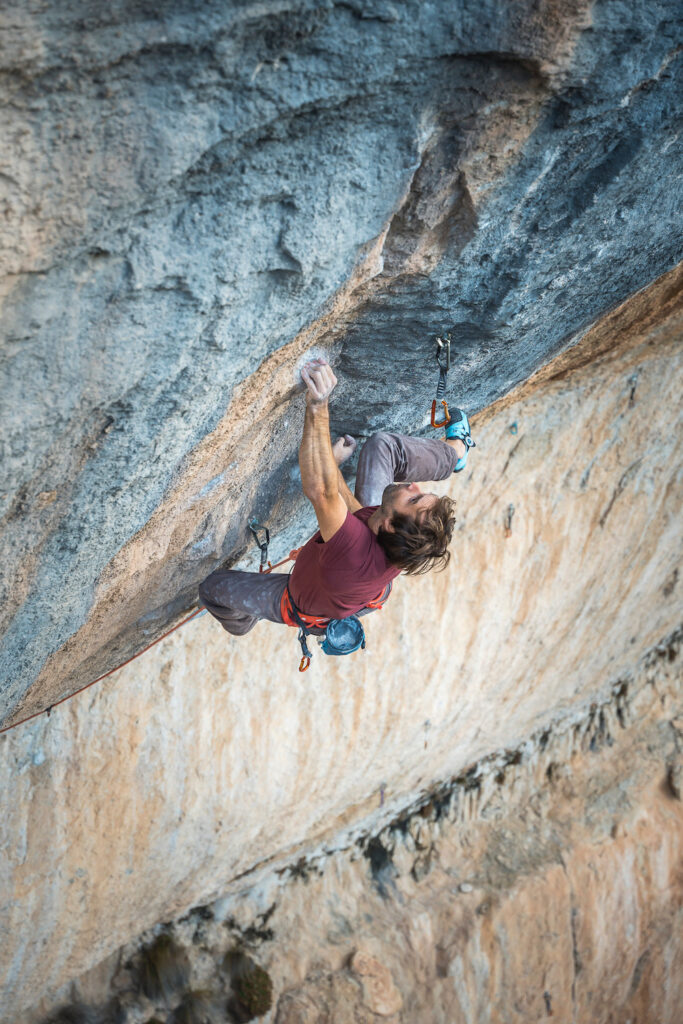
What’s next for you?
I’ve been looking at finishing off loose threads, things I’ve worked on in the past but have left unfinished. But at the same time, I want to do a little bit of soul searching. Each one of those routes requires a big investment of time and energy, and it can’t just look good on paper. It has to really feel, deep down, like that’s what I’m really passionate about, you know?
I had a great year, climbing Sleeping Lion and Black Pearl. Both of those times I had this sensation like, oh, I did one of my hardest routes, I should take advantage of this moment, that I’m in peak shape, and try to go do other things. Interestingly, both times it never really worked out.
After those intense experiences, I think it’s really important for longevity to take a step back, even for a short moment, to not feel completely attached or defined by climbing—or anything you do in life. I’ve found that’s been essential for me over the years.
“It’s very easy with the inertia to move on to the next project, and just feel like that’s what you should be doing, almost out of a fear of not knowing who you are without that goal.”
It’s very easy with the inertia to move on to the next project, and just feel like that’s what you should be doing, almost out of a fear of not knowing who you are without that goal.
Those objectives have become so much a part of my identity.
Every time you go out, especially when you’re trying these hard routes, you have to reinvent yourself. Even if it’s the same route, you’re a different person, you’re in a different place in life, and you have to reinvent yourself in some way.
I’ve been meditating on all of that recently. I think, looking back on it, it’s what I’ve always done in between projects. It’s important to take a step back to reflect on who you are, what you’re doing, and why you’re doing it—for the psych to be genuine.
Why do you think more top climbers aren’t out there developing?
I don’t know, man. That’s something I reflect on myself. I’m not sure if people are just wired differently.
I personally would be really curious if some of the top climbers of today would go out and spend some time developing, just for the sport. You have these climbs that I’ve put up with my vision, my experience, of what I think is possible. That sets the bar at a certain level. The next generation, coming in later in the game, are in a position where they could imagine something even more spectacular.
Right now, climbing on the routes that I’ve put up, they’re climbing the past generation’s vision. I think it would be interesting for them to take that to the next step. That’s where the next level of climbing is going to come from, right?
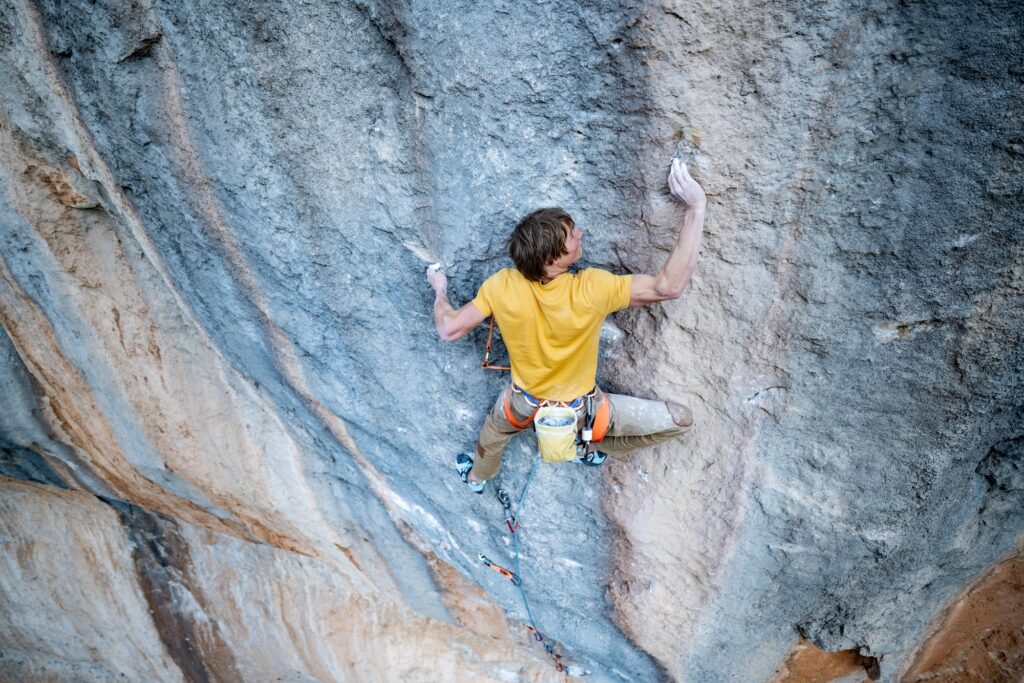
Q&A with Alex Megos:
What inspired you to try Sleeping Lion?
Chris had mentioned the project in Siurana a few times when I was in Spain the years before. And, of course, when he did it and proposed 9b+, it seemed like the obvious thing to try, since there’s not that many 9b+’s to choose from, especially in winter. It seemed like the one to go and try. I had a two week break over Christmas and New Years, which allowed me to travel to Siurana and to give it a go. Also, it looked kind of good on the video.
Describe the route for us, section by section.
The route starts with an intro boulder problem for about two quickdraws, which is not super hard but maybe around 8a or 8a+ route climbing section, until you stand on a ledge. From there, the actual route starts. You have to climb up and pre-clip two quickdraws.
Then you have a quite big Kilterboard move from crimp to crimp—that’s pretty much the first real move of the route. After that, you have a few more hard and big moves to a decent rest. From there the second proper section starts; some tick-tacky moves into a gaston, then to a crimp and an undercling, and a little bit of a dyno to the left, so it’s a bit of a cross-move dyno to a potato-like ledge. That’s one of the famous moves of the movie, I would say, because it looks photogenic. So if you’ve seen any jump move on the route, that’s the one.
There you have a bit of a shakeout, but not too good. I think Chris placed a heel-hook next to the hand. I just kept my feet low and I didn’t spend very much time on that rest.
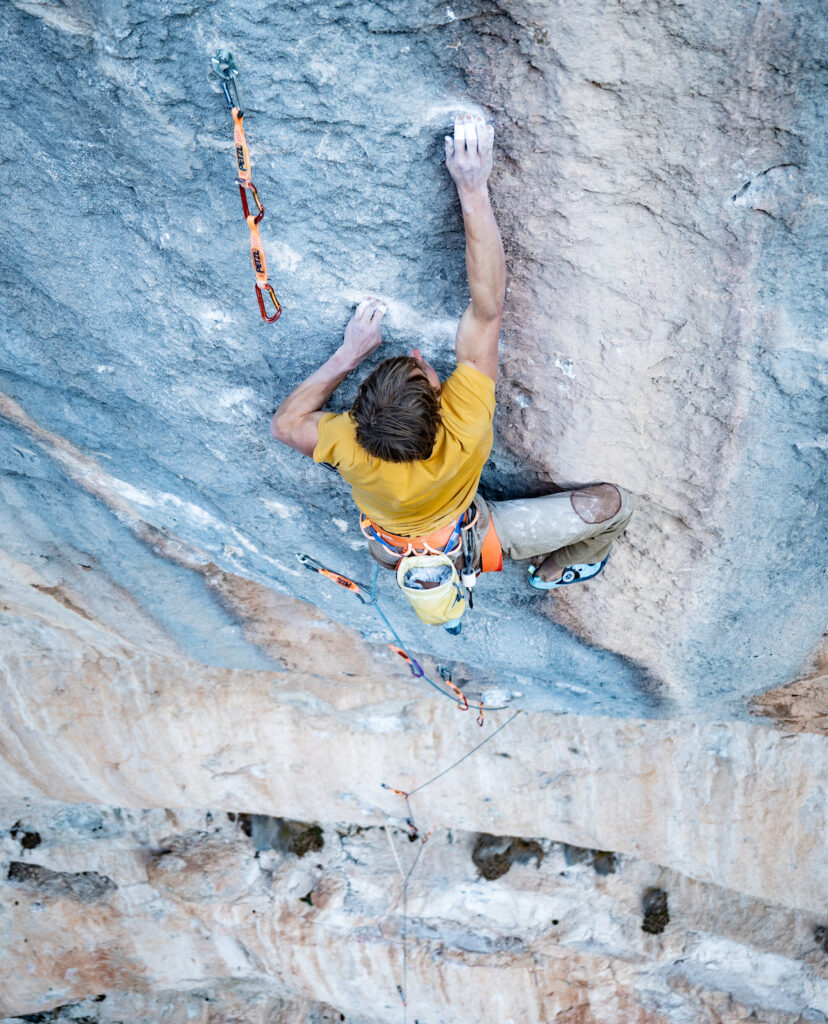
From there you have another section with two tiny crimps and another big move from an undercling pocket into a very dihedral-like feature, almost, at least that’s what it climbs like, with super high feet, a big lock-off to another crimp from where you rest.
From there you have another weird section where you do three moves out of a heel hook, with rather bad handholds, but a good heel hook. Once you do that move you have the final section of the route, with five or six more moves on crimps, with the last move being that gaston move in the picture I posted. I kind of like the last move, the dropper move, where Chris fell I think more than 15 times, and I also fell there I think four times until I stuck it.
Technically the route is over afterwards—you get a good kneebar rest and good handholds—but you still have to climb two bolts of 8a, 8a+ climbing, and it’s much harder than you’d want it to be. You’re very most likely not going to fall, but it’s still quite hard.
Watch Alex Megos Climb Sleeping Lion:
What was the crux for you?
The crux for me was definitely the redpoint crux, the last hard move in the last section, so it was rather an endurance problem than anything else for me. Of course, it got better over time and working on the route I got the sections more dialed. But I still fell four times on the last gaston move.
I also broke one hold. It was in a little crux, not really a climbing crux but still a sending crux because I had to ask Chris to come glued it back on. So that was a little crux, too.
But in general I would say, for me, it was an endurance redpoint crux, not a specific move that felt super hard for me.
Tell us more about the broken hold. Did it affect the climb?
The broken hold did affect the climb a little bit. For one, it made me more nervous because I lost two days due to the broken hold. When Chris glued it back on, it was definitely quite a bit worse than it was before. Before I was able to clip from that hold, which I wasn’t able to do anymore after he glued it back on. But overall I don’t think it changes the grade. You don’t necessarily have to clip that quickdraw next to this hold, so you just pull through. You also use it as a foothold afterwards. It was not as good as it was before, but overall I wouldn’t say it really made a huge difference.
You managed to climb it quickly—what was the process like?
I managed to climb it rather quickly. It took me eight days. For the first three days in a row I was just working on sections, then I took a rest day. On day four, I gave it two redpoint tries. On my second, I broke the hold, so I couldn’t try any more for three days. So I just climbed on some other stuff. And the next day Chris came to glue the hold back on. And then, well, three days later, I tried again, which was then day five [on the route]. That’s where I fell twice on the last move.
On day six, the conditions didn’t feel super good, so I couldn’t get up to the last move. And then I took a rest day. On day seven, I got super close one time again, falling on the gaston move, I think twice again. And then on day eight, I did it on my second try after falling once lower down because my hand slipped.
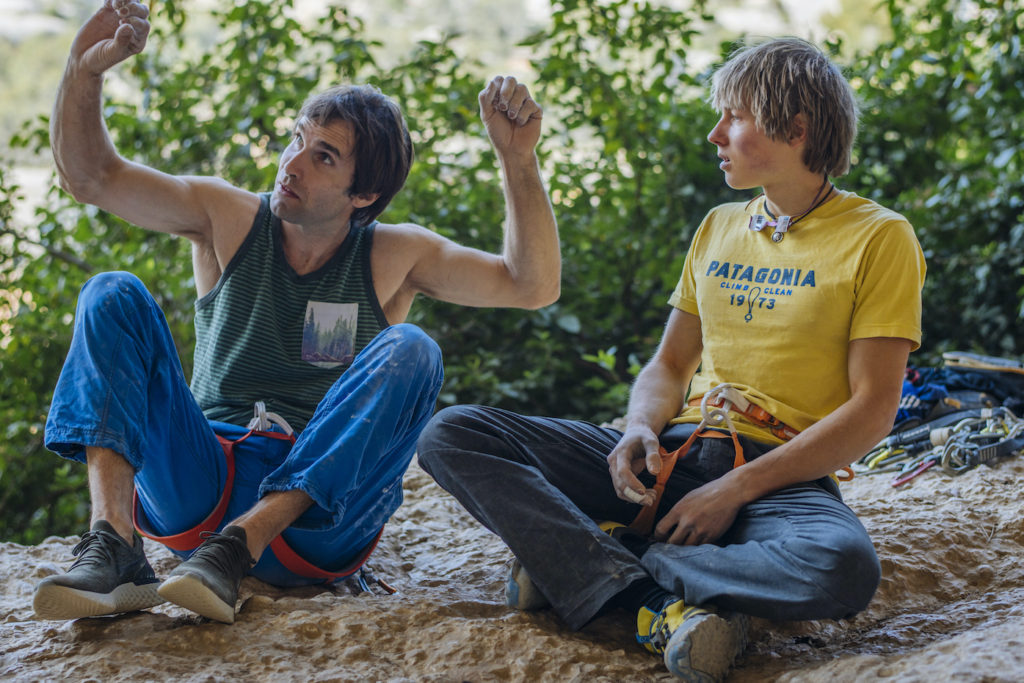
Did you receive any beta and encouragement from Chris or other climbers?
I took my beta from the videos I saw, so one from Chris’s video but also from the video Stefano posted on his YouTube. And also Jorge, he posted a few sections of the route on his Instagram. So after working on the route for the first day, I checked all of the videos and after knowing the holds, it was easier to see which beta everybody uses, so that’s what I used for beta.
Of course, I also got some encouragement. I was texting with Chris while I was there. I was also texting with Jorge while I was there. And that, of course, helped a lot to exchange beta and share the experience with them.
What’s next for you?
Next for me is indoor training. Coming up, I’ve got some simulation competitions and a big goal for the spring is to qualify for the Olympics in Paris, with the two qualification events coming up in May and in June. So that will be the general project for the next few months.
Anything else to add?
I’d like to add, thank you very much for my friends and my family supporting me. For Chris coming out and hanging for a little bit. The other Chris, Chris Hanke, for coming out and filming and bullshitting. And also thanks to Uri Maraver from Tenaya for coming out and supporting on the send day—that was quite cool.

